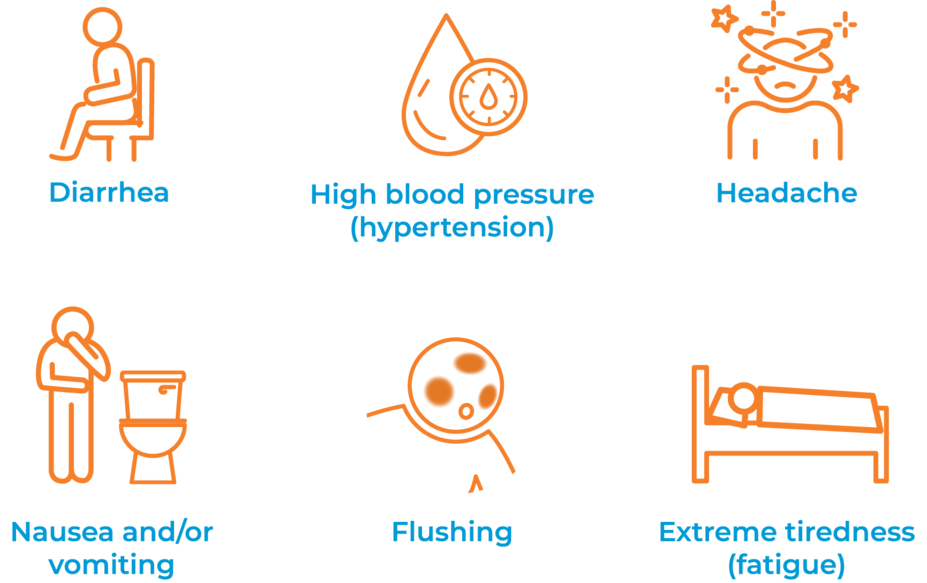
Understanding GEP-NETs
In order to understand gastroenteropancreatic neuroendocrine tumors (GEP-NETs), it is important to start with NET—a neuroendocrine tumor.
NET is a rare type of cancer that forms in neuroendocrine cells, which make hormones. Some of these tumors make extra amounts of hormones that may cause symptoms such as flushing and diarrhea. NETs are usually slow growing, but not all NETs are the same. They can be different in size, and some grow faster than others.
GEP-NETs are NETs that grow in the gastrointestinal tract, including the stomach, small intestine, rectum, colon, and appendix, or in the pancreas.
What are the signs and symptoms of GEP-NETs?
GEP-NET symptoms vary, depending on the specific type. Some GEP-NETs are called functional because they produce extra hormones. These extra hormones cause a variety of hormone-related symptoms. However, most GEP-NETs are called nonfunctional. This means they don’t produce extra hormones or cause hormonal-related symptoms.
Signs and symptoms of GEP-NETs include:
GEP-NETs are often misdiagnosed. However, there are various tests and scans that can help your health care professional make the right diagnosis.
Imaging Tests | |
| Computed tomography (CT) | A CT scan uses x-rays to take pictures of the inside of the body. It takes many x-rays of the same body part from different angles to help your doctor tell if your tumor has grown, changed, or spread. |
| Magnetic resonance imaging (MRI) | An MRI scan uses radio waves and powerful magnets to take pictures of the inside of the body. This type of scan is good at showing the spine and soft tissues. |
| Ultrasound | An ultrasound is a test that uses sound waves to form pictures of the inside of the body. |
| Positron emission tomography (PET) | A PET scan is designed to show cancer cells and whether cancer has spread. |
Blood and Urine Tests | |
| Complete blood count (CBC) | A CBC measures the number of blood cells in a blood sample. |
| Biochemical tests | Biochemical testing measures certain substances like hormones that may be present with a NET. Certain symptoms are seen when your body makes too much of a certain hormone. |
| Urine tests | Besides blood, doctors also test urine to look for signs of disease. Urine tests can also assess if your kidneys are working well. |
Biopsy | |
| Fine-needle biopsy | A biopsy is a procedure that removes samples of fluid or tissue. |
What is disease progression?
Disease progression means that the cancer has worsened either by the tumor growing or by spreading within your body. GEP-NETs may not cause symptoms, which makes tracking tumors challenging. This means it’s important to talk to your doctor about how to best monitor your tumor.
Cancers may spread in different ways | |
| Tissue: The cancer spreads from where it began by growing into nearby areas. | |
| Lymph system: The cancer spreads by getting into the lymph system. The cancer travels through the lymph vessels to other parts of the body. | |
| Blood: The cancer spreads from where it began by getting into the blood. The cancer travels through the blood vessels to other parts of the body. | |
Doctors typically treat GEP-NETs with the following goals in mind:
- To remove the tumor with surgery
- To stop or slow the growth and spread of the tumor
- To relieve symptoms associated with too much hormone production
GEP-NET, gastroenteropancreatic neuroendocrine tumor; NET, neuroendocrine tumor.


